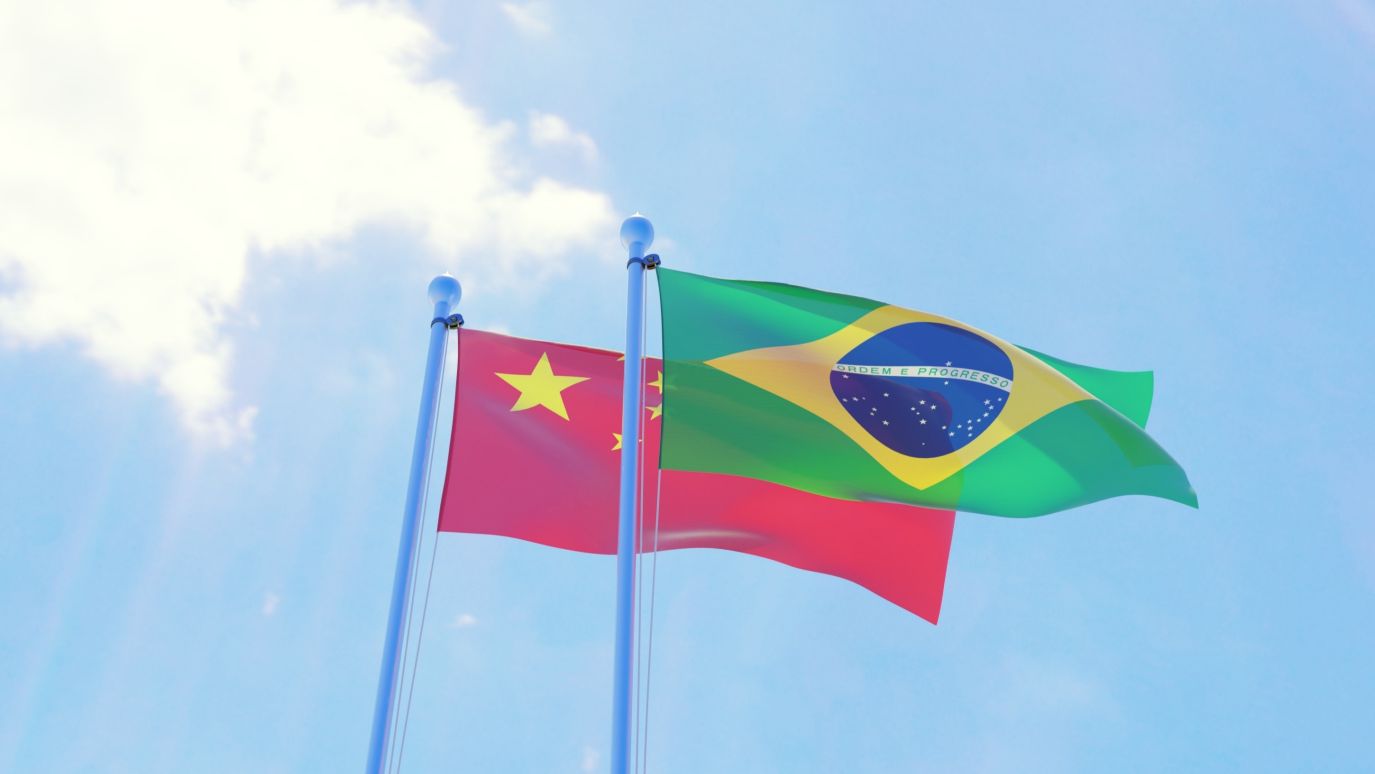China and Brazil strengthen strategic trade and investment partnership

On 14 April 2023, Brazilian President Lula da Silva was invited for talks with President XI Jinping as part of the former’s state visit to China. It follows the January visit of President XI Jinping’s special envoy, Vice President Wang Qishan, to Brazil for President Lula da Silva’s inauguration, after which Xi sent a congratulatory message and expressed the importance of further developing the two countries’ comprehensive strategic partnership.
Reviving Brazil’s leadership in the BRICS
China’s interest in the region represents its ongoing Belt and Road Initiative (BRI), which aims to extend China’s influence across Latin America and more broadly the Global South. Lula is onboard – he has taken a pro-Russian stance and often praises the Chinese system. Lula also aims to revive Brasília’s leadership in the BRICS – Brazil, Russia, India, China, and South Africa – which he helped found in 2009.
During his visit to Brazil, Wang presented Lula with four recommendations:
- Strengthen top-level planning and actively promote bilateral interactions in foreign, congressional, legal, military, and regional affairs.
- Solidify and broaden trade cooperation, especially in technical innovation, the digital economy, and green economics.
- Deepen multilateral strategic coordination, jointly protect true multilateralism, and strengthen coordination on climate and other issues.
- Strengthen overall China-Latin America cooperation. China is prepared to host China-LATAM fora, deepen relations with Mercosur and Union of South American Nations, and increase communication with Brazil.
In response, Lula stated that he “hopes to strengthen strategic and long-term cooperation”. Lula intends to elevate Brazil’s relations with China to a new level, even though the relationship’s asymmetric nature serves China’s interests. China continues to view Brazil primarily as a source of foodstuffs and raw materials, and as a destination for manufactured goods. But Beijing has little interest in providing advanced technology that eventually could make Brazil a market competitor.
Brazil is pursuing more investment in renewable energy, including hydroelectric, wind, and solar power. The Brazilian electricity tariff structure favors producers to recoup production costs and has attracted Chinese state-owned firms interested in high returns to counterbalance fixed, less profitable rates at home.
China eyes the “Lithium Triangle”
However, Brazil is not China’s main interest in Latin America. Twenty-one Latin American and Caribbean countries have signed onto the BRI and China has free trade agreements with Chile, Costa Rica, Panama, and Peru. But it is the lithium reserves in Chile, Argentina, and Bolivia that represent major investment magnets for China.
Chile, Argentina, and Bolivia comprise the “Lithium Triangle,” which hosts more than half of the world’s lithium reserves. Chile was the second-biggest producer of lithium in 2022 at 39,000 metric tons (MT), and it has the most reserves in the world by a large amount holding most of the world’s “economically extractable” lithium reserves. Its Salar de Atacama hosts approximately 37 percent of the world’s lithium reserve base.
Argentina is the fourth largest lithium producer in the world and in 2021 it put out 6,200 MT of the metal. It ranks third in terms of world lithium reserves at 2,700,000 MT, according to industry analysis, and has the world’s biggest pipeline of lithium projects and 19 million metric tons of resources that haven’t yet been tapped. Chinese and US companies engaged in bidding wars for Argentina’s lithium resources, while Rio Tinto Group and Zijin Mining Group are pouring more than a billion dollars into the country.
Challenges affecting China’s approach to LATAM as an investment destination include the region’s splintering politics with pendulum effects and a “resurgence of the Left”; US interference in regional politics; big differences in countries’ attitudes toward the US; lack of regional integration; incongruous educational levels; criminal activity prevalence; and wealth gap due to excessive urbanization.
US concerns over China’s ambitions in Latin America
US concerns over China’s ambitions in Latin America center on China’s role in the erosion of democratic governance in the region. Questions regarding China’s intentions in Latin American have emanated from the US Congress and the Department of Defense Southern Command (SOUTHCOM).
According to SOUTHCOM, PRC activities have included “investments in strategic infrastructure, systematic technology and intellectual property theft, disinformation and propaganda campaigns, and malicious cyber activity—all with the goal of expanding long-term access and influence in this hemisphere.”
In 2022 Congressional efforts to pass the “Western Hemisphere Security Strategy Act” highlighted US policymakers’ concerns over the rise of populist authoritarian governments in the region as well as China’s infusion of investment and trade in strategic sectors including electricity generation and transmission, biotechnology transportation logistics, telecommunications, smart cities, and e-commerce. The US is said to be “vigilant” of Chinese activity in LATAM.
Pamir assesses that China’s expanding engagement with Brazil and Latin America serves Beijing’s ambition of exporting China’s governance and development model and influencing public perceptions of China as a countervailing power vis-à-vis the United States.
Pamir’s analytical teams provide deep insight into geopolitical impact, risk landscape, and competitive strategies in foreign markets. To gain access to our extensive library of real-time assessments and find out more about our subscription and advisory services that have helped over 50 Fortune 500 companies across multiple key verticals get in touch today.
China’s 5G influence in developing economies
China’s Belt and Road Initiative and its digital counterpart, the Digital Silk Road, threaten to displace US telecom and tech companies in developing economies in Africa, Latin America and the Middle East. How can US operators and network providers stand up to the challenge?